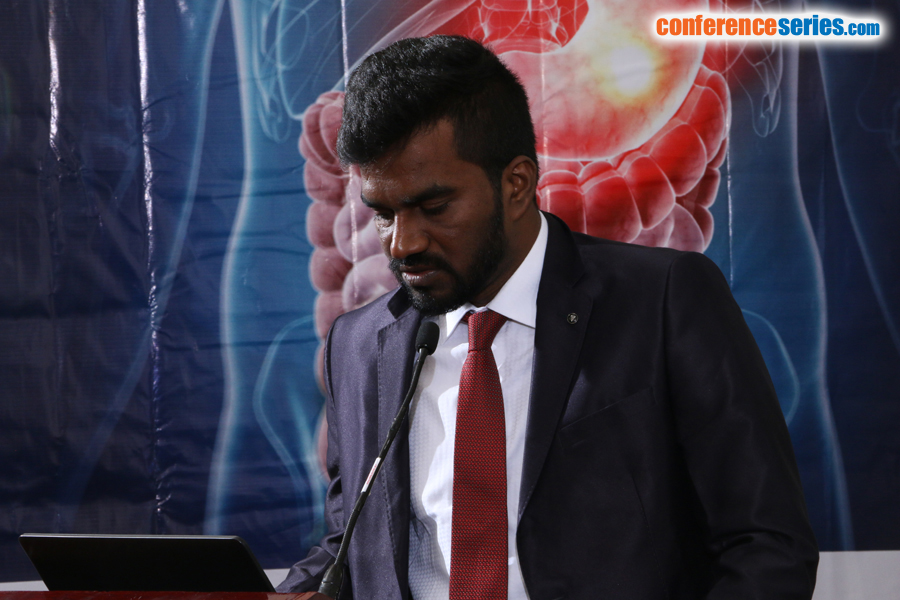
Thinakar Mani B
Institute of Medical Gastroenterology, Madras Medical College, India
Title: Role Of Endotherapy Vs Surgery In The Management Of Traumatic Pancreatic Injury - A Tertiary Center Experience
Biography
Biography: Thinakar Mani B
Abstract
Background and Aims
Pancreatic injury remains a complicated condition requiring an individualized case by case approach to management. In this study, we aim to analyze the varied presentations and treatment outcomes of traumatic pancreatic injury in a tertiary care center
Materials and Methods
All consecutive patients hospitalized at our center with traumatic pancreatic injury between 2013 and 2017 were included. The American Association for Surgery of Trauma (AAST) classification was used to stratify patients into five grades of severity. Outcome parameters were then analyzed based on the treatment modality employed.
Results:
Of the 35 patients analyzed, 26 had an underlying blunt trauma with the remaining 9 presenting due to penetrating injury. Overall in-hospital mortality was 28%. 19 of these patients underwent exploratory laparotomy with the remaining 16 managed non-operatively. 9 patients had severe injury ( >grade 3) – of which 4 underwent endotherapy, 3 had stents placed and one underwent an endoscopic pseudocyst drainage. Among those managed non-operatively, 3 underwent a radiological drainage procedure.
Conclusion:
Mortality rates were clearly higher in patients managed operatively. This is likely a result of significantly higher degrees of major associated non-pancreatic injuries and not just a reflection of surgical morbidity. Despite this, surgical management remains the mainstay of therapy, especially in higher grades of pancreatic injury. However we would like to emphasize that endoscopic intervention definitely remains the preferred treatment modality when the clinical setting permits.
This is especially applicable in cases of main pancreatic duct injury with ascites as well as pseudocysts.
Speaker Presentations
Speaker PPTs Click Here

